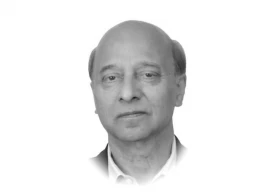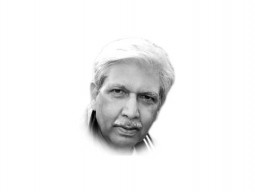
Last week’s incident at Daska was the outcome of such interplay. A lot of lawyers assembled outside a police station to ‘peacefully’ protest against certain administrative decisions taken by local authorities. In an attempt to temper the ‘scuffle’, which ‘somehow’ broke out between the protestors and stationed police, the latter intemperately fired rounds of bullets, some directly at the crowd. Two men, one of whom was the president of the local bar association, fell to their death in this attempt by the Punjab police to keep peace. The lawyer community, quite expectedly, reacted in hurt and anger. They set on fire government offices and official residences, pelted police vehicles with stones and hindered traffic on thoroughfares. Their agitation, to no surprise, drew the attention of the provincial government, which ordered an investigation into the tragedy and promised quick dispensation of justice.
Several questions abound. Was the protesting congregation of lawyers in Daska truly peaceful? What (who) sparked the violence? Was the use of force by the police, or the reaction (particularly of the violent variety) it engendered from the legal fraternity, justified? These are questions of blame and proportionality. The Joint Investigation Team constituted by the provincial government (following a rethink over the decision to ascribe the task to a judicial commission) will, it is hoped, provide answers in due course. The impartiality of the inquiry, or the value of its findings, are separate matters altogether. The questions, however, are not new. There is almost a rehearsed sequence to them: A protest. Some trigger. Police action. Resort to force. Violence. An inquiry.
The last year has witnessed this sequence play out on more than one occasion. Who can forget the grand fiasco at Model Town, considered now as the epitome of police brutality? Or the thrashing meted out to the blind, who had assembled at the Lahore Press Club on World Disability Day to demand an increase in government job quotas for the disabled? Police assault on a congregation of female nurses demonstrating against government policy regarding regularisation of their services cannot, for its atrociousness, be forgotten. The scenes of police-civilian altercation from D-Chowk remain etched in our memories on similar accounts.
A common thread of police excesses, often committed against innocent and unarmed civilians exercising (mostly within legal limits) their constitutional right of assembly, runs across these instances of protest and violence. Police protocol now appears to be simply ‘shoot-at-sight’ without any regard to law or consequence. SHO Shehzad Warraich merely followed such protocol at Daska. To condemn the show of police brutality at Daska, without commenting on the reaction it has evoked from the legal community, would be unfair. Rage and anger at the ruthless murder of the two lawyers at the hands of the Punjab police is in order. Yet its manifestation through acts of arson, vandalism or assault cannot be justified. This is not the first time we (lawyers) have resorted to violent agitation in support of (at least in this instance) the most worthy of causes. We have on occasion ransacked the courtroom of the provincial chief justice to communicate our displeasure at the conduct of a civil judge; attacked the Supreme Court building to press, with fervour, our demand for the establishment of additional benches of the Lahore High Court; thrashed members of the police in angst for being made to go through security checks or the impounding of our vehicles. There is an inherent paradox to our hooliganism: we earn our bread through talk of law enforcement, yet remain, to our convenience, unaffected by the rule of law. Daska then represents two wrongs; neither can be condoned. One must vehemently condemn the sense of entitlement and impunity that has penetrated its way into the mindset of our trigger-happy police, but at the same time reflect on the culture of violence that is now considered by many as the trademark of our profession.
Published in The Express Tribune, June 2nd, 2015.
Like Opinion & Editorial on Facebook, follow @ETOpEd on Twitter to receive all updates on all our daily pieces.













COMMENTS
Comments are moderated and generally will be posted if they are on-topic and not abusive.
For more information, please see our Comments FAQ